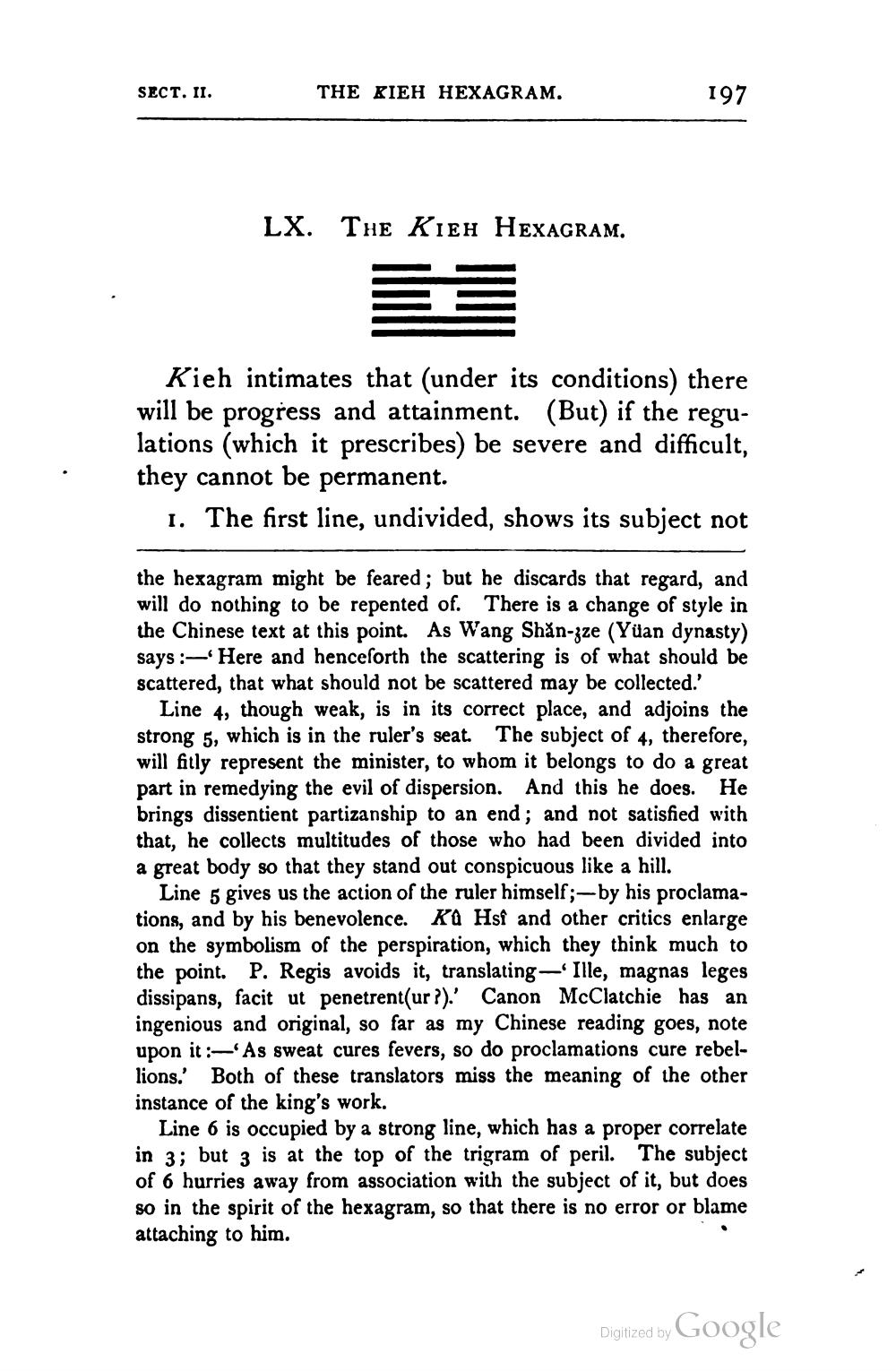________________
SECT. II.
THE KIEH HEXAGRAM.
197
LX. THE Kieh Hexagram.
Kieh intimates that (under its conditions) there will be progress and attainment. (But) if the regulations (which it prescribes) be severe and difficult, they cannot be permanent.
1. The first line, undivided, shows its subject not
the hexagram might be feared; but he discards that regard, and will do nothing to be repented of. There is a change of style in the Chinese text at this point. As Wang Shăn-zze (Yuan dynasty) says : Here and henceforth the scattering is of what should be scattered, that what should not be scattered may be collected.'
Line 4, though weak, is in its correct place, and adjoins the strong 5, which is in the ruler's seat. The subject of 4, therefore, will fitly represent the minister, to whom it belongs to do a great part in remedying the evil of dispersion. And this he does. He brings dissentient partizanship to an end; and not satisfied with that, he collects multitudes of those who had been divided into a great body so that they stand out conspicuous like a hill.
Line 5 gives us the action of the ruler himself;-by his proclamations, and by his benevolence. Ka Hsf and other critics enlarge on the symbolism of the perspiration, which they think much to the point. P. Regis avoids it, translating — Ille, magnas leges dissipans, facit ut penetrent(ur?).' Canon McClatchie has an ingenious and original, so far as my Chinese reading goes, note upon it :-'As sweat cures fevers, so do proclamations cure rebellions. Both of these translators miss the meaning of the other instance of the king's work.
Line 6 is occupied by a strong line, which has a proper correlate in 3; but 3 is at the top of the trigram of peril. The subject of 6 hurries away from association with the subject of it, but does so in the spirit of the hexagram, so that there is no error or blame attaching to him.
Digitized by Google




